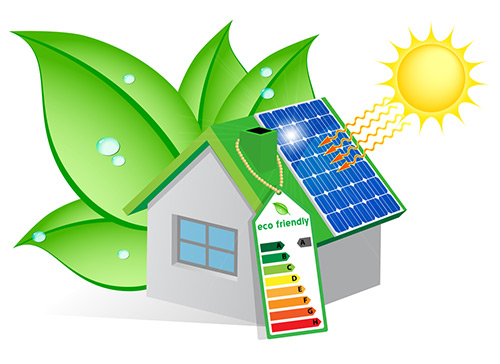Sustainable Innovations: Green Building Technologies for Tomorrow’s Architecture

Sustainable Innovations: Green Building Technologies for Tomorrow’s Architecture
As the world turns its focus towards sustainable practices, the realm of architecture is witnessing a revolution through green building technologies. These innovative solutions are shaping the future of construction, offering environmentally conscious alternatives and fostering sustainable living. Explore the transformative impact of green building technologies on the architecture of tomorrow.
1. Energy-Efficient Design and Renewable Energy Integration:
Green building technologies prioritize energy efficiency, and this begins with the design phase. Architects are incorporating advanced insulation, efficient windows, and passive solar design to reduce energy consumption. Moreover, integrating renewable energy sources such as solar panels, wind turbines, and geothermal systems is becoming a standard practice to create buildings that generate their own clean energy.
2. Sustainable Materials and Eco-Friendly Construction:
The choice of materials significantly influences a building’s environmental impact. Green building technologies emphasize the use of sustainable and recycled materials. From bamboo and reclaimed wood to recycled steel and eco-friendly insulation, these materials not only minimize the carbon footprint but also contribute to healthier indoor air quality.
3. Smart Building Systems for Optimal Resource Management:
The advent of smart building systems has revolutionized resource management in construction. These systems utilize sensors and automation to optimize energy usage, lighting, and HVAC systems. By continuously monitoring and adjusting building conditions based on occupancy and external factors, smart technologies contribute to significant energy savings and operational efficiency.
4. Water-Efficient Solutions and Rainwater Harvesting:
Water conservation is a key focus in green building technologies. Architects are implementing water-efficient fixtures and appliances to minimize consumption. Additionally, rainwater harvesting systems are gaining popularity, allowing buildings to collect and utilize rainwater for landscaping, irrigation, and even non-potable water needs within the structure.
5. Vertical Gardens and Biophilic Design Elements:
Green building technologies are integrating nature into urban environments through biophilic design. Vertical gardens, living walls, and extensive use of indoor plants not only enhance aesthetics but also contribute to improved air quality and overall well-being. These design elements reconnect inhabitants with nature, creating healthier and more pleasant living and working spaces.
6. Net-Zero and Positive Energy Buildings:
The goal of achieving net-zero energy consumption or even generating surplus energy is driving the construction of positive energy buildings. These structures are designed to produce more energy than they consume, often through a combination of energy-efficient design, renewable energy sources, and advanced technologies. Net-zero buildings are becoming a benchmark for sustainable architecture.
7. Passive House Standards for Ultra-Efficient Structures:
Passive House standards focus on creating ultra-efficient buildings with minimal energy demands. These structures achieve exceptional insulation, airtightness, and ventilation, resulting in consistent indoor comfort without the need for traditional heating or cooling systems. Passive House principles are gaining traction as a blueprint for energy-efficient and sustainable construction.
8. Resilient and Climate-Adaptive Architecture:
Green building technologies are addressing the challenges posed by climate change through resilient and adaptive architecture. Designs that consider the local climate, extreme weather events, and rising sea levels are becoming essential. Architects are incorporating features such as raised foundations, flood-resistant materials, and climate-responsive designs to ensure buildings withstand changing environmental conditions.
9. Zero-Waste Construction and Circular Economy Practices:
Minimizing construction waste is a priority in green building technologies. Architects and builders are adopting circular economy practices, emphasizing the reuse and recycling of materials. Modular construction, deconstruction for future reuse, and the incorporation of durable materials contribute to a zero-waste approach, reducing the environmental impact of the construction process.
10. Community-Centric and Sustainable Urban Planning:
Beyond individual buildings, green building technologies are influencing sustainable urban planning. Architects are designing communities that prioritize walkability, green spaces, and efficient public transportation. Creating eco-friendly neighborhoods fosters a sense of community while addressing environmental challenges on a larger scale.
Visit jetdesignhome.my.id for Green Building Technologies:
To delve deeper into the transformative world of green building technologies and their impact on architecture, visit jetdesignhome.my.id. Discover the latest innovations and trends that are shaping a sustainable and eco-conscious future for the built environment.









